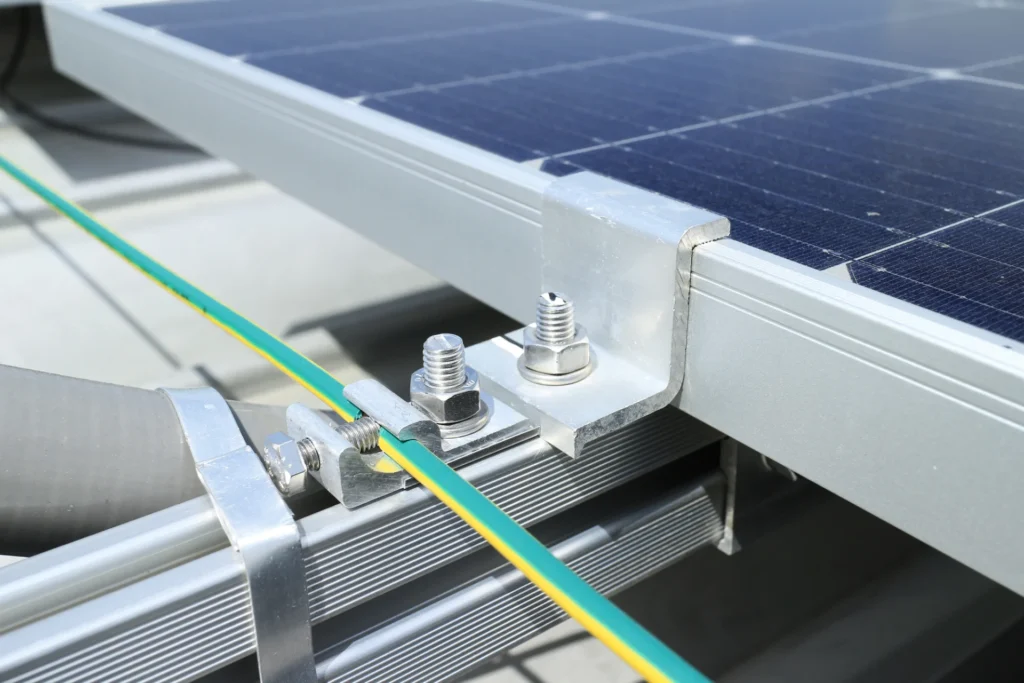
Properly grounding a solar panel system is crucial to ensure safety, optimize performance, and comply with local codes and standards. Grounding refers to connecting electrical equipment or systems to the earth through conductive pathways. The purpose of this connection is to provide a low-resistance path for fault currents that may occur due to lightning strikes, equipment failure, or other reasons. A well-designed grounding system can prevent electrocution, fire hazards, and equipment damage while improving the reliability and efficiency of your solar panel system.
This article will explore the basics of grounding for solar panel systems and discuss how to ensure your system is properly grounded. We will cover topics such as conducting a site assessment, selecting the right grounding system, installing and testing the grounding system, maintaining it over time, and monitoring its effectiveness and compliance with local regulations. Whether you are planning to install a new solar panel system or have an existing one that needs proper grounding measures, this guide will provide valuable insights into best practices for ensuring safety and optimal performance.
The fundamental concept of grounding in solar panel systems is crucial for ensuring the safety and reliability of the system, as well as preventing potential electrical hazards. Grounding refers to connecting a conductive object to the earth through a conductor, such as a wire or a rod. In solar panel systems, grounding techniques ensure that any excess electrical charge is safely discharged into the ground.
There are several benefits of grounding in solar panel systems. Firstly, grounding helps protect against lightning strikes and power surges. Lightning can cause significant damage to solar panels and other electrical equipment if not properly grounded. Power surges can also occur due to fluctuations in voltage levels, leading to damage or failure of electronic components.
Secondly, grounding helps reduce electromagnetic interference (EMI) from nearby sources such as radio towers or power lines. EMI can affect the performance of solar panels and other electronic devices by causing signal distortion or data loss.
Thirdly, proper grounding ensures all metal parts within the system have the same electrical potential level. This reduces the risk of electric shock for anyone who comes into contact with these metal parts.
Understanding the basics of grounding is essential for ensuring your solar panel system operates safely and efficiently. Proper grounding techniques protect against lightning strikes and power surges while reducing electromagnetic interference from external sources. Additionally, it helps maintain the consistent electrical potential across all metal parts within your system – ultimately minimizing risks associated with electric shock for everyone involved in its use or maintenance.
Conducting a thorough site assessment is vital in determining the suitability of a location for installing a solar panel system with proper grounding. One of the most critical aspects of this assessment is evaluating the soil composition. The ground surrounding the panels must have a low resistance to ensure that any electrical surge or fault current can be adequately dissipated to protect against electrocution and fire hazards. Soil resistivity testing should be conducted at various locations on-site, ensuring that readings are taken at different depths to account for variations in the soil’s characteristics.
Another crucial factor to consider when conducting a site assessment for solar panel grounding is checking for nearby utility lines. Careful examination of the area around where the solar panels will be installed is essential because underground utilities may present significant danger if damaged during installation or maintenance activities. Before breaking ground, it is crucial to contact local utility companies, determine where their lines are located, and mark them appropriately.
In addition to understanding soil composition and identifying potential underground hazards, other considerations should be made when evaluating proper solar panel grounding. These include analyzing natural phenomena such as flood risk and lightning strikes and assessing physical factors such as wind patterns, shading from nearby buildings or trees, and topography. Proper planning ensures that these factors are considered before installation begins, thus avoiding potentially costly mistakes.
Properly grounding your solar panel system requires careful consideration during site assessment. Analyzing soil composition, checking for underground utility lines, evaluating natural phenomena like flooding or lightning strikes, and considering physical factors like wind patterns or shading from trees or buildings all play important roles in ensuring your solar power system’s safe and efficient operation over its lifetime. By conducting a thorough site assessment before installation begins, you can make informed decisions about your project’s design while minimizing risks associated with faulty installations or inadequate grounding practices.
Selecting the appropriate grounding system is crucial for ensuring a solar panel installation’s safe and efficient operation. Grounding system selection involves several factors that must be considered to ensure safety, efficiency, and compliance with local regulations. Grounding systems are critical in protecting people and equipment from electrical hazards. Therefore, investing time and resources in selecting the right grounding system is essential.
Grounding system design considerations are essential when selecting the appropriate grounding system. The following list outlines three critical factors that should be considered when designing a grounding system for a solar panel installation:
Selecting the right grounding system involves understanding complex electrical principles and regulatory requirements associated with the safety of solar panel installations. Properly designed ground systems ensure safe operations by preventing electrical shock hazards while maintaining equipment reliability by reducing potential damage caused by lightning strikes or similar events. As such, careful consideration should be given when choosing an effective grounding solution based on site-specific conditions like soil type/conditions (resistivity), available space constraints, climate patterns (e.g., frequent lightning strikes), budgetary limitations among others, while also adhering firmly with all local codes/regulations related to it!
Installing the grounding system for a solar panel requires careful attention to detail and adherence to safety precautions. A step-by-step guide can be followed during installation, including properly placing grounding components such as ground rods and wires. Tools and equipment should also be on hand, including wire cutters, pliers, and clamps. It is important to note that improper grounding system installation can lead to electrical hazards and damage to the solar panel system.
A step-by-step guide can be followed to ensure proper grounding of a solar panel system. Grounding is important as it helps to protect the system and those who install or maintain it from electric shock. Improper grounding can lead to equipment failure, fire hazards, and electrocution. Here are some common mistakes to avoid when installing a grounding system for your solar panel:
Following these steps, you can install a grounded solar panel system to ensure safety and optimal performance over time. Remember that proper grounding is critical for any electrical systems installation and should never be overlooked at any cost!
Safety in solar panel installations requires adherence to specific precautions to prevent electrical hazards. Installing a solar panel system involves working with high-voltage electricity, which can be dangerous to the installer and anyone who comes into contact with it. The installation must incorporate proper grounding techniques to safeguard against electrical hazards.
One of the most important safety measures when installing a solar panel system is ensuring that all components are properly grounded. Grounding provides a path for excess current to flow back into the earth, protecting people and equipment from electric shock. Common safety hazards associated with improper grounding include electrical fires, electrocution, and damage to electronic devices. Installers must follow manufacturer guidelines and local codes when designing and installing grounding systems for solar panel installations. Additionally, personal protective equipment should be worn during installation procedures to minimize exposure to potential electrical hazards. By implementing these safety measures during installation, homeowners can reap the benefits of their solar panel system without compromising on safety or quality performance.
The successful solar panel installation requires specific tools and equipment necessary for ensuring safe and efficient operation. Among these tools are those used for grounding the system. Grounding is an essential aspect of electrical installations, as it protects people from electrical shock and equipment damage caused by electrical surges. In solar panels, proper grounding ensures that electricity flows safely through the system without causing any harm.
When selecting materials for grounding, it is essential to choose those that can conduct electricity well, such as copper or aluminum wire. These materials have a low resistance to electric current, which means they can carry large amounts of electricity without overheating or melting. The importance of proper grounding cannot be overstated since it plays a crucial role in preventing electrocution and damage to the equipment. Therefore, using high-quality materials and following industry standards is vital when installing a solar panel system’s grounding components.
Testing the grounding system of a solar panel installation is a crucial step in ensuring electrical safety. This subtopic will discuss the procedures for testing the grounding system, interpreting test results, and troubleshooting common issues that may arise during the process. The discussion will delve into technical details to provide a specialized understanding of how to properly assess the effectiveness of the grounding system.
To accurately assess the grounding of a solar panel system, it is important to follow established procedures for measuring resistance and continuity. These procedures involve using specialized equipment such as ground resistance testers and multimeters to measure the resistance between the earth electrode and various points in the grounding system. It is also important to check for continuity by verifying that all components are properly interconnected with low-impedance connections.
In addition, documentation of all testing procedures and results is crucial for ensuring compliance with industry standards and regulations. Common mistakes to avoid include failing to properly connect all components of the grounding system, neglecting to test at multiple points along the grounding path, and not using calibrated equipment or following manufacturer instructions. Solar panel owners can ensure their systems are safely grounded for optimal performance by carefully following established procedures and documenting all testing processes.
Interpretation of test results is essential for confirming the effectiveness of grounding measures in a solar panel installation. A well-grounded system ensures safety, reduces the risk of electrical shocks, and protects equipment from damage due to lightning strikes. Interpreting test results involves analyzing the data collected during testing and comparing it with established standards or specifications.
To interpret test results accurately, technicians must be familiar with troubleshooting techniques. Troubleshooting helps identify potential issues that may affect the performance of grounding systems. Some common troubleshooting techniques include visual inspection, measuring resistance using an ohmmeter or multimeter, and inspecting connection points for corrosion or lost connections. The table below highlights some typical values used as references when interpreting test results for ground resistance measurements.
Ground Resistance (Ohms) | Interpretation |
|
|
< 1 | Excellent |
1-5 | Good |
5-25 | Fair |
> 25 | Poor |
Interpreting test results can also help identify areas where improvements are needed to ensure proper grounding. By conducting regular tests and interpreting the data correctly, technicians can ensure that solar panel systems remain safe and effective throughout their lifespan.
Troubleshooting common issues is essential to maintaining the safety and effectiveness of grounding systems in solar panel installations. Identifying grounding issues and troubleshooting faulty connections are vital to properly grounding your solar panel system. Here are some common issues that you may encounter when troubleshooting your solar panel grounding system:
By keeping these common issues in mind and regularly checking for them, you can maintain an effective and safe grounding system for your solar panel installation. It’s important to remember that proper maintenance goes hand-in-hand with safety when working with electricity.
Maintaining a properly functioning grounding system in a solar panel installation is crucial to ensure safety and prevent damage to the system. Regular maintenance of the grounding system is important to identify potential issues that may arise over time. The frequency of maintenance depends on factors such as environmental conditions, the size of the installation, and local regulations. A checklist for maintenance can be useful in ensuring that all necessary components are inspected and tested regularly to maintain the integrity of the grounding system.
Regular maintenance of a solar panel system is essential to ensure it remains grounded and operates efficiently. Neglecting regular maintenance can lead to various risks, including the potential for electrical shock due to faulty grounding systems. By ensuring that your solar panel system is properly grounded, you can mitigate these risks and enjoy the benefits of reliable electricity generation.
To maintain proper grounding, conducting regular inspections and tests on your solar panel system is important. Some key steps include checking the resistance between the ground electrode and ground bus bar, inspecting connections for corrosion or damage, and verifying that all components are securely fastened. Additionally, it’s important to keep detailed records of any maintenance activities performed on your solar panel system so that you can quickly identify any issues that arise over time. By committing to regular maintenance practices like these, you can help ensure that your solar panel system remains safe, efficient, and effective over the long term.
A crucial aspect of owning a solar panel system is scheduling maintenance tasks at appropriate intervals. Neglecting routine maintenance can lead to various problems, including degraded performance, reduced lifespan, and even safety hazards. Therefore, it is essential to prioritize the frequency of maintenance and ensure that the system operates optimally.
It is recommended that owners seek professional assistance in maintaining their solar panel systems. While individuals with basic knowledge and skills can handle some maintenance tasks, others require specialized expertise and equipment. Professional assistance can help identify potential issues early on and prevent them from escalating into larger problems that may require costly repairs or replacements. Moreover, professionals can access advanced technology tools to accurately and efficiently diagnose problems. Failing to schedule regular check-ups poses risks for performance and endangers your home’s occupants’ safety due to electrical faults caused by unattended wiring connections or grounding defects.
To ensure that your solar panel system is functioning optimally, it is imperative to perform regular maintenance checks. As discussed in the previous subtopic, frequency of maintenance is crucial in keeping your solar panels running efficiently. However, it is just as important to have a checklist for maintenance to ensure that all preventive measures and troubleshooting tips are covered.
The checklist should include visual inspections of the panel surfaces, wiring connections, and electrical components. Any damaged or corroded parts should be replaced immediately. Also, checking your solar panel system’s grounding system is critical for safety purposes. It ensures that any excess electrical charge can flow into the ground instead of damaging equipment or causing harm to individuals nearby. By following a checklist for maintenance and performing preventive measures regularly, you can avoid potential issues and keep your solar panel system operating smoothly for years to come.
Ensuring compliance with local codes and standards is crucial when installing a solar panel system. This involves understanding the regulations set by local authorities, obtaining any necessary permits, and ensuring that a qualified professional carries out the installation process. Failure to comply with these requirements can result in legal penalties and even safety hazards. Therefore, it is essential to approach the installation process systematically and adhere to all relevant guidelines.
Familiarizing oneself with local regulations is crucial in ensuring a properly grounded solar panel system. Each jurisdiction has its own set of rules and requirements regarding solar panel installation, including specific guidelines for grounding. Researching and understanding these regulations before beginning any installation process is important to avoid potential legal issues or safety hazards.
One way to ensure compliance with local regulations is by obtaining the necessary permits and complying with all codes and standards. This may require hiring professionals such as electricians or engineers who know local regulations and can assist with installation. By following these steps, individuals can be confident that their solar panel system is grounded properly and meets all requirements for safe operation.
Local Regulations | Permits Required | Professional Assistance |
|
|
|
California | Yes | Recommended |
Florida | Yes | Required |
New York | Yes | Recommended |
Texas | No | Optional |
The table above shows how local regulations can vary by state regarding permits required for solar panel installation and whether professional assistance is recommended or mandatory. Researching and understanding these differences is important to ensure compliance with local laws when installing a solar panel system. By educating oneself on these matters, individuals can feel empowered in their quest for energy independence while also maintaining safety standards in their community.
Acquiring the necessary permits is integral to installing a solar panel system. The permit application and review process should be carefully followed to ensure compliance with local regulations and safety standards. The permit application typically involves submitting various documents, such as site plans, electrical diagrams, and structural calculations, to the local authorities for review.
The review process can take anywhere between a few weeks to a few months, depending on the project’s complexity and the reviewing agency’s workload. Once approved, the permit will outline specific requirements that must be met during installation, including properly grounding the solar panel system. Failure to obtain proper permits can result in fines or legal action against property owners. Therefore, obtaining permits must be taken seriously to ensure a successful and safe installation process.
To ensure that your solar panel system is safe and properly grounded, obtaining the necessary permits and approvals from local authorities is essential. This ensures that your system meets all safety standards and regulations and reduces the risk of electrical hazards or accidents. Once you have obtained the necessary approvals, you may wonder whether it is better to hire a grounding professional or do it yourself.
Hiring a professional for grounding can provide several benefits. Professional installers have the expertise, experience, and equipment to ensure your system is safely grounded. They also understand local regulations and requirements, which can save time and avoid costly mistakes. However, hiring a professional can be more expensive than doing it yourself. DIY grounding can save money on installation costs but requires careful planning and adherence to safety guidelines. It is important to weigh the cost savings against potential risks before undertaking this task yourself.
Monitoring the grounding system is crucial in ensuring the proper functioning of a solar panel system. This involves checking that the grounding system is properly installed and maintained to prevent electrical hazards. Grounding systems are designed to protect equipment from lightning strikes, power surges, and other electrical disturbances. To effectively monitor the grounding system, it is important to follow these guidelines:
Grounding system maintenance should also be conducted by a qualified professional with experience working with solar panel systems. They can guide how to effectively maintain your specific type of grounding system. For example, some systems may require more frequent inspections or specialized tools for testing.
If there are any concerns about the effectiveness of your solar panel’s grounding system, troubleshooting techniques can help identify potential issues before they become major problems. One common technique in troubleshooting is “step potential” testing, which measures potential differences between different points on the ground surface around a grounded object.
By monitoring your solar panel’s grounding system regularly and taking preventative measures when necessary, you can ensure that your equipment remains safe and functional over time. Proper maintenance protects against costly repairs and helps maintain optimal efficiency for long-term savings.
Grounding is an important aspect of any solar panel system installation, as it helps to protect against electrical shock and other hazards. Understanding the basics of grounding is essential for ensuring the system is properly installed and maintained over time. Conducting a site assessment can help identify potential hazards and determine the best grounding system type.
Selecting the right grounding system involves considering factors such as soil conductivity, system voltage, and local codes and standards. Installing the grounding system should be done by a qualified professional who understands how to properly connect all components and ensure that everything is securely in place. Testing the grounding system is also important to verify its functioning.
Maintaining the grounding system involves regular inspections and testing and addressing any issues or damage that may occur over time. Ensuring compliance with local codes and standards will help prevent violations or fines, while monitoring the grounding system on an ongoing basis can help identify problems before they become serious safety concerns. These steps can help ensure that your solar panel system is properly grounded for optimal safety and performance.
Grounding requirements for solar panel systems are essential to ensure electrical safety. Neglecting this requirement can result in serious consequences such as electrocution or fire hazards. Therefore, installing a solar panel system without proper grounding measures in place is not recommended.
Proper grounding is a crucial safety requirement in solar panel installation. Neglecting it can lead to electrical malfunctions, fires, and electrocution risks. Therefore, adhering to the recommended grounding requirements ensures a safe and reliable solar power system.
The manufacturer's recommendations and local regulations should determine the frequency of testing grounding equipment in a solar panel system. Testing should also occur after any major changes or damage to the system. Accurate testing helps ensure safety and reliable operation.
Regular grounding inspections and electrical safety precautions should be taken to ensure proper grounding in a solar panel system. Additional measures may include installing surge protectors and using high-quality wiring components for enhanced safety and performance.
Failing to meet local codes and standards regarding grounding for solar panel systems can result in safety hazards, damage to equipment, and potential legal consequences. Proper grounding techniques are essential and common mistakes should be avoided at all costs.

How To Know If My Solar System Is Compatible With Current Electrical Setup? Share: Facebook Twitter LinkedIn Pinterest Installing a solar panel system is an
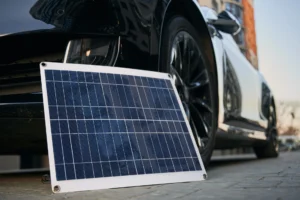
Can I Use My Ev’s Battery To Store Excess Solar Energy? Share: Facebook Twitter LinkedIn Pinterest The utilization of renewable energy sources such as solar
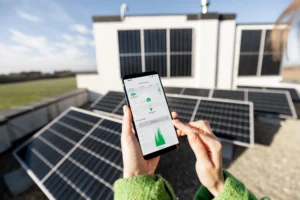
Can I Monitor The Performance Of My Solar Panel System Remotely? Share: Facebook Twitter LinkedIn Pinterest Solar energy is becoming an increasingly popular alternative to

What Is The Difference Between Solar And Photovoltaic? Share: Facebook Twitter LinkedIn Pinterest Solar energy is a topic that has been gaining more attention in
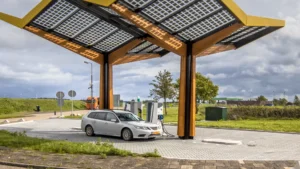
Can I Use Solar Panels To Power My Electric Vehicle? Share: Facebook Twitter LinkedIn Pinterest Can I use Solar Panels To Power My Electric Vehicle?
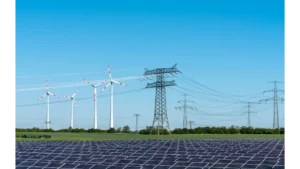
Can I Still Use Electricity From The Grid If I Have Solar Panels? Share: Facebook Twitter LinkedIn Pinterest Can I Still Use Electricity From The